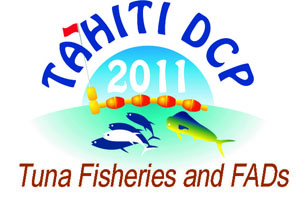Aggregation of early juvenile yellowfin tuna with payaos in the Philippines
1 : Department of Fisheries, Kinki
204-3327 Nakamachi, Nara, -
Japon
2 : College of Fisheries and Ocean Sciences, University of the Philippines in the Visayas
* : Corresponding author
Miagao, Iloilo 5023, Philippines -
Philippines
Philippine waters are important regions for yellowfin tuna stocks because they include spawning and nursery grounds. However, no information is available on the behavior of early juveniles, and no experiments had been conducted around payaos in the Philippines. Payao is a moored FAD that is made of a bamboo raft, a mooring rope, a cement anchor and suspended palm fronds. Self-recording receivers were attached to the mooring ropes of the payaos. To understand the phenomenon of aggregation of early juvenile yellowfin tuna around payaos, forty juveniles (19-31 cm FL) attached with an ultrasonic transmitter and/or a data logger were released from 2005 to 2007. The juveniles showed the similar behavior with adults in some aspects. Some individuals showed diurnal vertical swimming pattern, swam within a limited shallow range during the nighttime and dived to deeper waters during the daytime. Other juveniles performed deep diving over 100 m during excursions among payaos. Still others showed a synchronized, diurnal horizontal swimming pattern. However, no juveniles returned to the same payao after an interruption of over 24 h. Juveniles stayed around the payaos less than 12 days, shorter than in adults. It is suggested that the early juveniles in this area are in the initial phase of their migration and that stay around a payao for a few days to forage in a school.

 PDF version
PDF version
